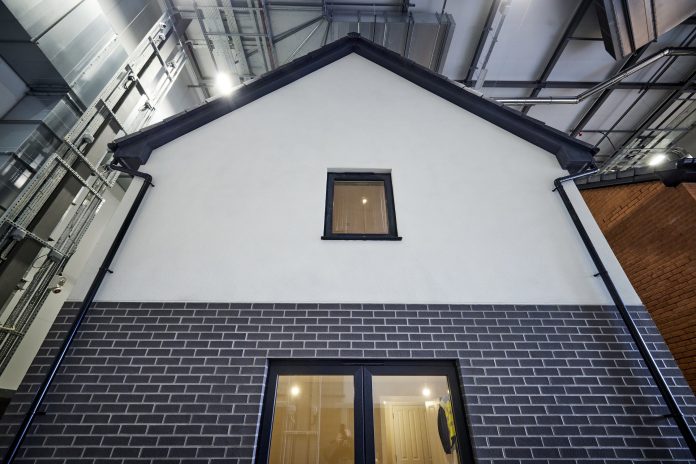The first results from a ground-breaking research collaboration between The University of Salford, housebuilders Barratt Developments and Bellway, and construction solutions provider Saint-Gobain, have been released as the project celebrates its first anniversary.
These results will contribute significantly to industry to understand the delivery of the Future Homes Standard and provide real insight into how sustainable housing can be delivered at scale.

Early results indicate that the Future Homes Standard can be delivered at scale by 2025, providing that the supply chain of key components can keep pace and skills training is readily available.
Two prototype homes, built in the unique Energy House 2.0 climate chamber at the University of Salford in January 2023, have been put through rigorous fabric testing. The chamber can recreate environmental conditions of 95% of the earth’s inhabited land, with temperatures from -20c to 40c, including rain, wind, snow, and solar. It was built in part thanks to funding from Innovate UK Innovation Accelerator.
The first results from the project concentrate on the fabric of the homes, including the overall performance, as well as the walls, roofs and floors. The lessons learned are helping to develop a roadmap for housebuilders to build zero carbon new homes in the UK.
The Future Home Standard is the new Building Regulations for new UK homes built from 2025 onwards, with all new homes designed to produce 80% fewer carbon emissions than homes built under the 2013 regulations. Compared to the average UK housing stock, these new homes are expected to be significantly more efficient, bringing financial benefits to households through lower running costs, and environmental benefits due to lower carbon emissions.
Since January 2023, researchers have been testing The Future Home from Bellway and eHome2 from Barratt/Saint-Gobain. Both are three-bedroom homes, built using high performing, efficient fabrics.
Initial findings from the testing of the fabric of the homes have shown how well the buildings have stood up to the kinds of extreme climates that we are experiencing now and are expected to happen more frequently in the future.
Both homes, which are constructed using different methods, had a small difference of up to 8% between the anticipated performance when designed, when compared to the actual performance when tested in climate-controlled conditions.
This makes the homes amongst the most-efficient that have been tested in research conditions.
Professor Richard Fitton of Energy House 2.0 at the University of Salford said: “The challenge for the construction sector over the next decade is being able to deliver future homes standards houses at scale. In the past year, Barratt Developments and Bellway built over 28,000 homes, so the scale of the change is significant. Working with product provider, Saint Gobain, this industry collaboration is truly groundbreaking.
“Both houses performed well on our fabric testing with valuable lessons that they can use when designing and building homes in the field and about the types of materials we need to create homes that lose only a very small amount of their heat. Typically, the performance of new build homes compared to the designed specification can vary between 5% and 140%.
“The results have showed both homes have performance within the top end of this performance gap and with additional learnings, modifications can be made to further improve the performance of these homes. Without Energy House 2.0 this type of testing would take significantly longer to complete but thanks to the fact we can control temperature to within 0.5c we have been able to get meaningful data in a matter of months.”







